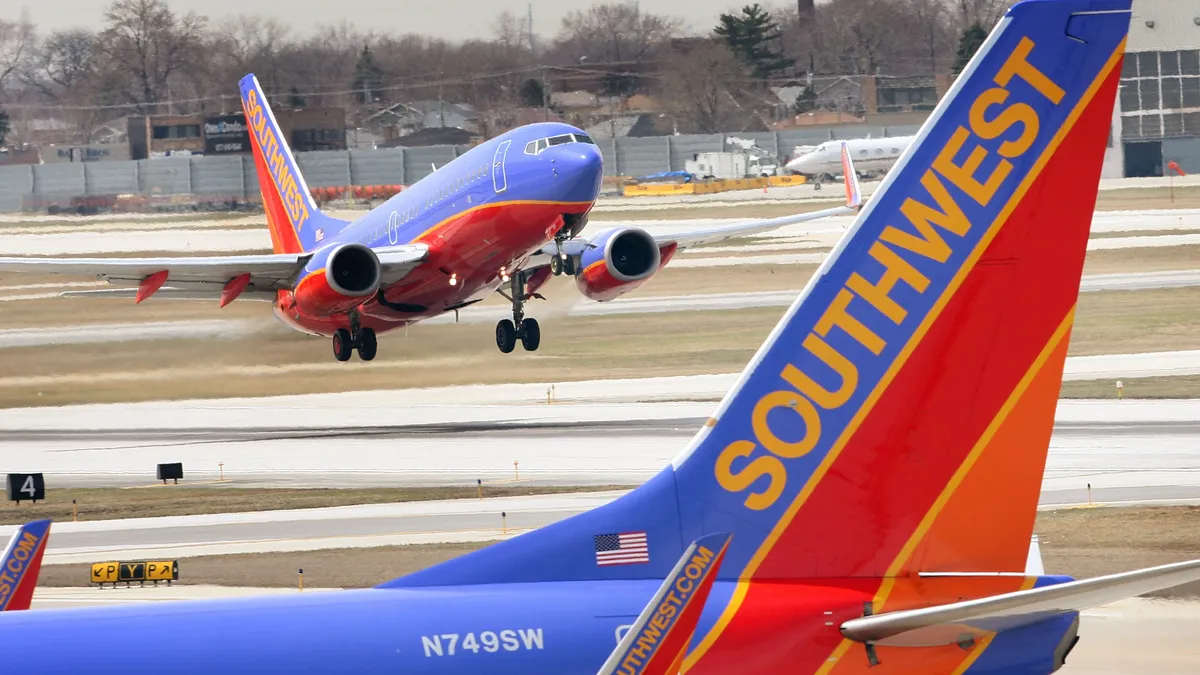Dive Brief:
- Communication gaps between operational workgroups, a lack of deicing equipment and manual crew rescheduling forced Southwest Airlines to ground thousands of flights in December, according to a company report published Thursday.
- Technology upgrades to crew reassignment software, weather alert dashboards, pilot departure tools and communication systems are part of the carrier’s $1.3 billion plan to improve operational resiliency this year, an increase of roughly 25% compared to the company's tech spend in 2019.
- A five-year operational modernization plan was underway at Southwest prior to December 2022, according to a company spokesperson. “Ongoing implementation of tools and technology that allow for a greater pace of recovery during extreme events will be prioritized,” the representative said in an email.
Dive Insight:
A Southwest board worked with aviation consulting firm Oliver Wyman to review the crisis, interviewing union representatives and employees from technology, network operations control and crew scheduling.
The analysis targets three remediation areas: severe weather equipment, cross-team collaboration and operational investments in technology and staffing.
“We had insufficient winter infrastructure and equipment in key airport locations and faced staffing challenges from the need to rotate employees outside in bitter winter weather conditions,” the company acknowledged in the report.
The pace and volume of cancellations overwhelmed reassignment software, forcing the airline to fall back on “time-consuming manual processes that could not keep pace with the volume of individual scheduling issues,” the report said.
As part of its IT overhaul, Southwest selected AWS as its preferred cloud modernization partner in March. The agreement is part of a long-term resiliency plan, according to a company spokesperson.
Moving forward, Southwest will deploy new tools to provide pilots with real-time insight into the amount of time they have to depart after deicing, the company said in a concurrent action plan. The plan also calls for reinforcing airport infrastructure at key locations, increasing available deicing equipment and bolstering winter preparedness.














